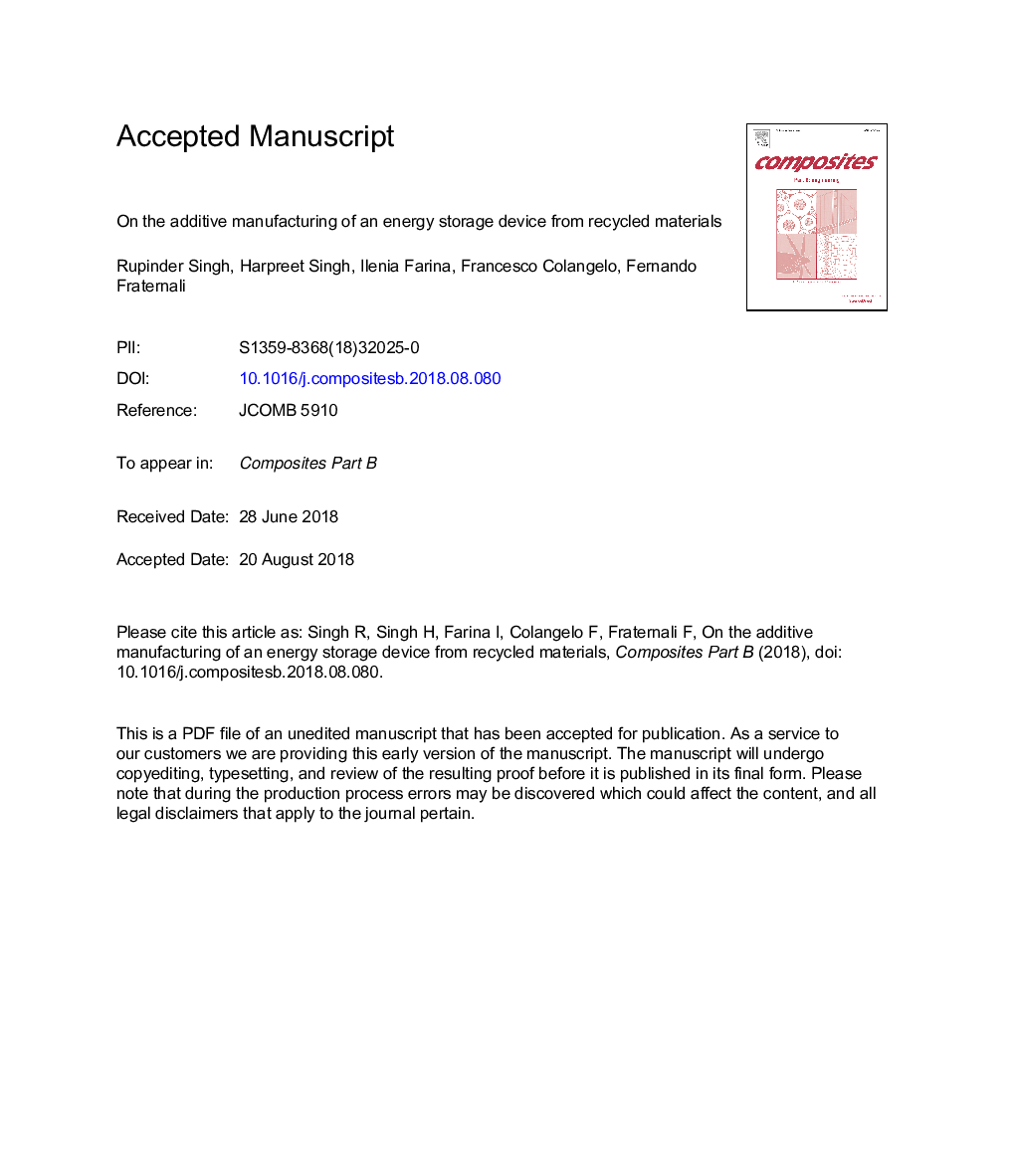| کد مقاله | کد نشریه | سال انتشار | مقاله انگلیسی | نسخه تمام متن |
|---|---|---|---|---|
| 10134030 | 1645606 | 2019 | 16 صفحه PDF | دانلود رایگان |
عنوان انگلیسی مقاله ISI
On the additive manufacturing of an energy storage device from recycled material
ترجمه فارسی عنوان
در تولید افزودنی یک دستگاه ذخیره انرژی از مواد بازیافتی
دانلود مقاله + سفارش ترجمه
دانلود مقاله ISI انگلیسی
رایگان برای ایرانیان
کلمات کلیدی
دستگاه های ذخیره سازی انرژی، سلول خشک، تولید افزودنی، بازیافت،
موضوعات مرتبط
مهندسی و علوم پایه
سایر رشته های مهندسی
مهندسی (عمومی)
چکیده انگلیسی
The disposal/recycling of plastic materials are one of the biggest challenges of 21st century. Some studies have been reported in recent past on recycling of thermoplastics via three-dimensional (3D) printing as a novel technique under primary and secondary recycling. But hitherto no work has been reported on use of recycled/virgin thermoplastics for use as energy storage devices (ESD). In this paper an effort has been made to develop in house ESD in form of dry cell by printing with low cost fused deposition modeling (FDM) based commercial open source 3D printer. The feed stock filament of FDM has been prepared by twin screw extrusion (TSE) comprising of advanced composite materials (thermoplastic: acrylonitrile butadiene styrene (ABS) matrix, reinforced with different proportions of chemicals/salts namely: MnO2, ZnCl2, NH4Cl and graphite), which has been used to print dry cell for energy storage applications. The commercial dry cell consists of four zones/sections and feed stock filaments for three zones have been prepared separately on TSE (with different proportions of ABS and reinforcement of chemical/salts) and fourth zone (of Zn metal) has been casted with conventional sand casting route. Finally, all four zones have been assembled in series to develop fully functional prototype of ESD. This study highlights that with the proposed methodology, dry cell comprising of minimum 40% by weight recycled thermoplastics can be prepared successfully having voltage potential at par with commercial dry cell. Another major advantage of using this novel route is that the ESD prepared is more thermally stable (confirmed by differential scanning calorimetry (DSC) analysis) and can operate up to 95â¯Â°C temperature. Along with this the ESD so prepared has better rheological, mechanical properties (tensile, surface hardness) ensuring it to be useable under severe loading conditions. The results are also supported by photomicrographs.
ناشر
Database: Elsevier - ScienceDirect (ساینس دایرکت)
Journal: Composites Part B: Engineering - Volume 156, 1 January 2019, Pages 259-265
Journal: Composites Part B: Engineering - Volume 156, 1 January 2019, Pages 259-265
نویسندگان
Rupinder Singh, Harpreet Singh, Ilenia Farina, Francesco Colangelo, Fernando Fraternali,
